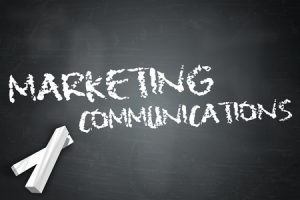
Content is still king when it comes to attracting and engaging customers and prospects. But the real key to success is to identify and produce the right mix of projects with compelling messaging that demonstrates your thought leadership and core competencies. To help you accomplish those goals, here is a brief list of content-driven marketing communications projects and their purposes.
Marketing Communications Projects
- Bylined articles: Informational articles authored by your subject matter experts and published in magazines read by your target audiences, help you develop a competitive edge and become a recognized industry leader. Unlike paid advertising, the content is considered trustworthy and increases your credibility and reputation in the marketplace. Bylined articles can range from 750 to 2500 (or more) words in length. They generally are written in the third person, without reference to proprietary products or services. They cover trends in the marketplace, tips and best practices. Bylined articles also describe controversial or innovative opinions, problem-solution scenarios and other content that is educational in nature.
- White papers: These are authoritative reports that identify a challenge or problem in the marketplace and your company’s ability to address and solve the challenge. White papers are used to educate, inform and help readers make decisions about how to succeed in the marketplace. They generally involve primary or secondary research. White papers contain these standard sections: introduction, history or contextual background, issues or pain points to be addressed, solutions available, lessons learned and results, and a conclusion. In addition, most companies include a section on their credentials and contact information.
- Case studies and success stories: Content for these projects come from your company’s demonstrated accomplishments. Unlike articles and white papers, case studies and customer success stories can be very self-promotional. They describe specific cases including documented results featuring your products and/or services in solving a specific customer’s problem or challenge. They include direct quotes from your customers that express their gratitude and appreciation for the results they’ve achieved. Some companies have confidentiality issues that prevent them from producing case studies and success stories. Yet, those who use them find they are a powerful marketing tool.
- Blogs and other social media: Blog content tends to be less formal and shorter than bylined articles, white papers and case studies. They include newsworthy content about your company and personal insights of interest to your prospects, customers and the general marketplace. Some companies repurpose content from their more formal marketing communications projects and turn it into blogs. It’s a great tool to use to increase the frequency of new content your company produces and increases SEO results. In addition to a company blog, social media is a cost-effective way to build brand awareness, expand the reach of your marketing content and encourage engagement with customers and prospects. New platforms and functions are introduced frequently. Therefore, it’s important to know which platforms your target audiences are using and focus efforts accordingly.

- Books and e-books: While content for these projects takes more time to produce, books and ebooks can be extremely effective tools in promoting your business, generating media exposure and booking speaking engagements. In the old days, the college mantra for professors was, “Publish or perish.” In some ways, the principle still applies. Being a published book author gives your senior leaders more credibility as thought leaders. This can be the tipping point for prospects when it comes to making a positive buying decision.
- Newsletters: In the 20th century, many companies produced internal and external newsletters to share company news, announce upcoming events, provide profiles of key executives and employees and provide ongoing education. Before the digital revolution, companies printed and mailed newsletters, often four or more pages in length. Today, that has changed. Content is shorter. They contain more graphics. With interactive formats, newsletters provide more engagement and electronic distribution of content.
- Press kits: In some ways, press kits are an extension of your business card. They add credibility when seeking media exposure or booking speaking engagements. Companies can choose to produce press kits electronically or in print. They include a personal bio of the individual or key executive being promoted, testimonials and a list of speaking or presentation topics the expert is prepared to address. They also include personal and company credentials, press clips and reprints of published articles, photos and/or videos. And, don’t forget a well-written cover letter that distinguishes the “expert” from the rest of the pack.
- News releases: In the past, many companies used press releases to announce new hires, promotions, additional offices or locations and financial data. Because of the plethora of information available today, press releases that provide more meaningful content generate more engagement. This content includes new products or product enhancements, innovative ideas, community service initiatives and other brand-enhancing messaging. They also increase the likelihood that media and news outlets you seek publish your press releases. In fact, when done well, they can result in press interviews that increase your ROI.
- Presentations: Content for presentations depends on the purpose, but the bottom line is that every company needs a “10” presentation. In other words, it has to represent quality and put your best foot forward. When did you last you review your sales presentation, corporate brochures, proposals, annual report, website or other customer-facing communications pieces? Is your content compelling and well-written? Is it graphically attractive? Do your pieces reflect a consistent look and feel? Is the content representative of your brand?
Achieve Goals Using Marketing Communications Projects

In the end, it’s important to determine how and when to use marketing communications projects to achieve your marketing goals. Most companies recognize their value. But, due to staff shortages, budget cuts, competing priorities or the fast pace of business change, marketing initiatives tend to fall through the cracks. To keep content fresh, relevant and engaging, develop and implement a strategic and actionable marketing communications plan that supports enterprise objectives and paves a clear path to revenue generation.
